
OUR VERDICT
While new features like wireless charging and faster pairing are useful, the AirPods (2019) aren’t a significant improvement over their predecessors, so while they’re well worth a look if you’re buying your first pair of true-wireless buds, if you have the original AirPods it’s hard for us to recommend upgrading.
FOR
- Faster pairing
- Wireless charging
- Hands-free ‘Hey Siri’ functionality
AGAINST
- Wireless charging case costs extra
- Audio hasn’t improved
- Identical design to the originals
The world was expecting Apple to bring out a brand-new version of the Apple AirPods that, supposedly, would be waterproof and noise-canceling; instead, Apple has simply updated its original true-wireless buds with an H1 chip and wireless charging.
While this may feel like an anticlimax for some, Apple says the inclusion of a new H1 chip improves connectivity and battery life, and allows for a new ‘Hey Siri’ voice activation feature, while an optional wireless charging case means you can use a Qi-compatible charging mat to power the case, rather than sticking a cable into the Lightning charging port in the bottom of the case.
Price and availability
The second generation of the Apple AirPods cost $159 / £159 / AU$249 with the standard charging case, and $199 / £199 / AU$319 with the new Wireless Charging Case bundled in.
The AirPods with the standard case are the same price as their predecessors, but you’ll need to shell out an extra $40 / £40 / AU$70 to get the benefits of wireless charging.
You can also purchase the charging case separately for $79 / £79 / AU$129, which is good news if you have the original AirPods but want to upgrade your case to one that supports wireless charging, although you might feel it’s a high price to pay for some added convenience.
Looking for something cheaper? You can get the Optoma NuForce BE Free5s, which are among our favorite true wireless headphones, for $100 (about £75, AU$130).

Design
Design-wise, there’s not a huge amount of difference between the second-generation AirPods and the originals; the long earbud stems and pillbox-style charging case look pretty much identical, although the new charging case now features a small LED light on the front, which allows you to check the charge status of the buds – it glows green if they’re fully charged, and orange if they’re not.
The charging case offers a further 20 hours of battery life on top of the five hours you get from the buds themselves, which is the same as the original AirPods; Apple also says the second-generation model offers “3 hours of talk-time from a single charge”, up from the two hours provided by the originals. This is thanks to Apple’s proprietary H1 chip, which is built into the new AirPods – more on that later.
We found charging the case was really quick – we went from 25% to 100% battery in around an hour – and we also found the stated battery life for the earbuds themselves to be accurate.
The new wireless charging case means you can use Qi-compatible charging mats to power the case without the annoyance of cables, which is convenient if you already have a wireless charging mat – and as mentioned, if you have the original AirPods, you can buy the case separately.
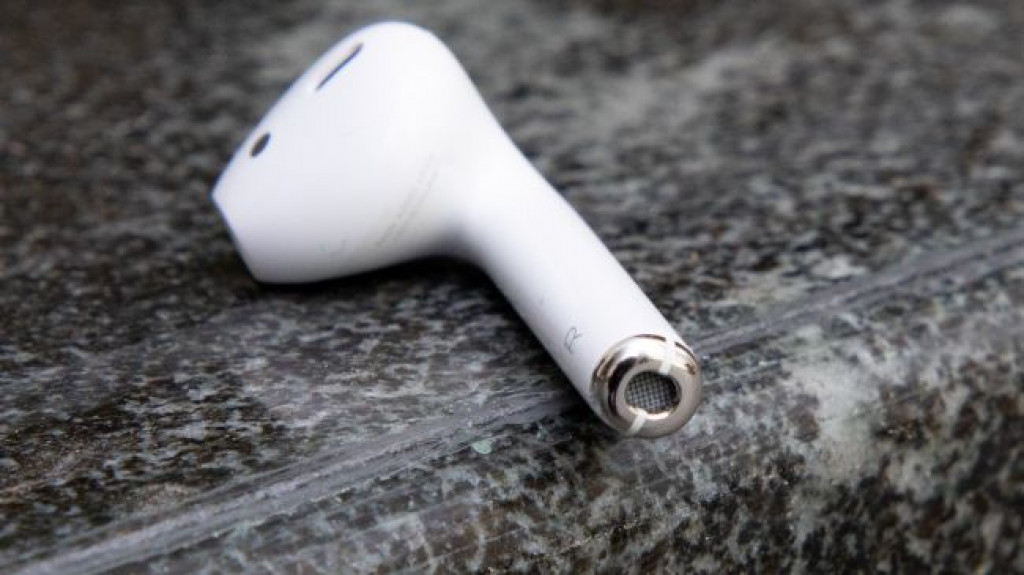
It’s interesting that Apple hasn’t changed the design of the earbuds themselves; after all, those stem-like protrusions were widely mocked upon their original release in 2016, and they don’t do the headphones any favors in 2019.
After all, other true wireless earbuds that arguably look more stylish have been released since then, like the B&O Beoplay E8 Wireless Earphones, and the new Samsung Galaxy Buds.
Another criticism of the first-generation AirPods was the lack of adjustable silicone ear tips that would allow you to find the best fit for your ears… and it’s the same story with the new AirPods.
Despite this, the new AirPods do feel fairly snug and comfortable, although we probably wouldn’t wear them out running for fear of them falling out.
As with other Apple products the design of the AirPods has quickly become somewhat iconic, and you could argue that the originals popularized the true-wireless earbud, which is a good enough reason to stick to a tried and tested design.
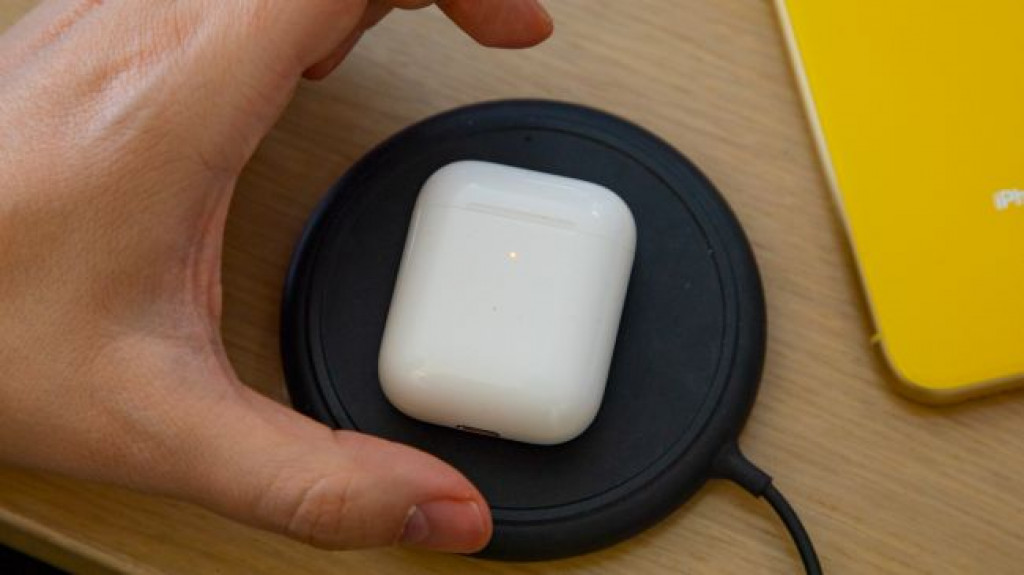
Features and performance
The main calling card of the second-gen AirPods is improved connectivity, thanks to Apple’s H1 headphone chip, which replaces the previous chip, the W1.
Pairing was pretty rapid with the original AirPods, but it’s noticeably quicker with the new AirPods; if you’re using an iPhone, an option to pair the AirPods will appear on your phone screen as soon as you open the charging case, as well as the battery status of the AirPods and the charging case.
The H1 chip also enables the new AirPods to offer hands-free ‘Hey Siri’ functionality. This means you can use the voice assistant command to place calls, change songs and more – basically anything Siri can do, direct from the earbuds, without needing to pull your iPhone out.
We found this feature worked really well, and the built-in microphone was adept at picking up our voice, even in loud environments.
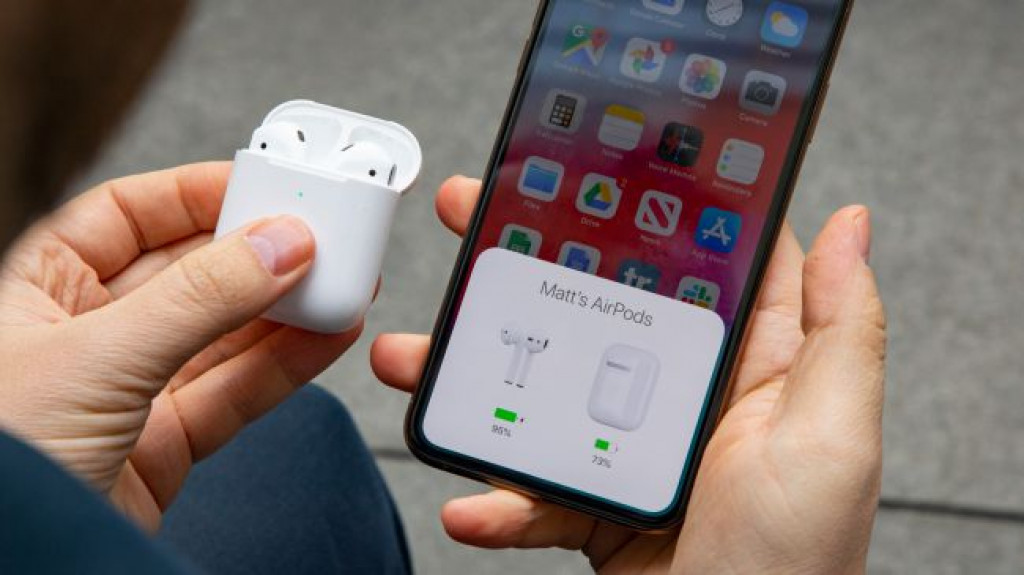
If you prefer, you can set up the new AirPods to summon the voice assistant when you double-tap the outer housing of the earbuds. If you select the AirPods from the Bluetooth menu in your phone’s settings, you can also configure the touch controls to play/pause your music, skip to the next or previous track; you can also turn off touch controls altogether. You can only assign one double-tap control to each earbud, which can be slightly limiting.
While we carried out most of our tests using an iPhone SE, we also tried pairing them with an Android phone, the Huawei Mate 20. While you don’t get the automatic pairing you get with an iPhone, Bluetooth pairing is still pretty quick. You just need to hold down the pairing button on the back of the AirPods case and they should appear in your phone’s Bluetooth menu.
Apple says the H1 chip means the “AirPods deliver up to two times faster switching between active devices”, are “50% faster when transferring a call to your AirPods”, and “deliver 30% lower gaming latency”.
We used the AirPods (2019) while playing iOS games and we didn’t experience any latency issues. We also found using the AirPods to make and answer calls to be a seamless experience, and the quality of the audio was generally very good.
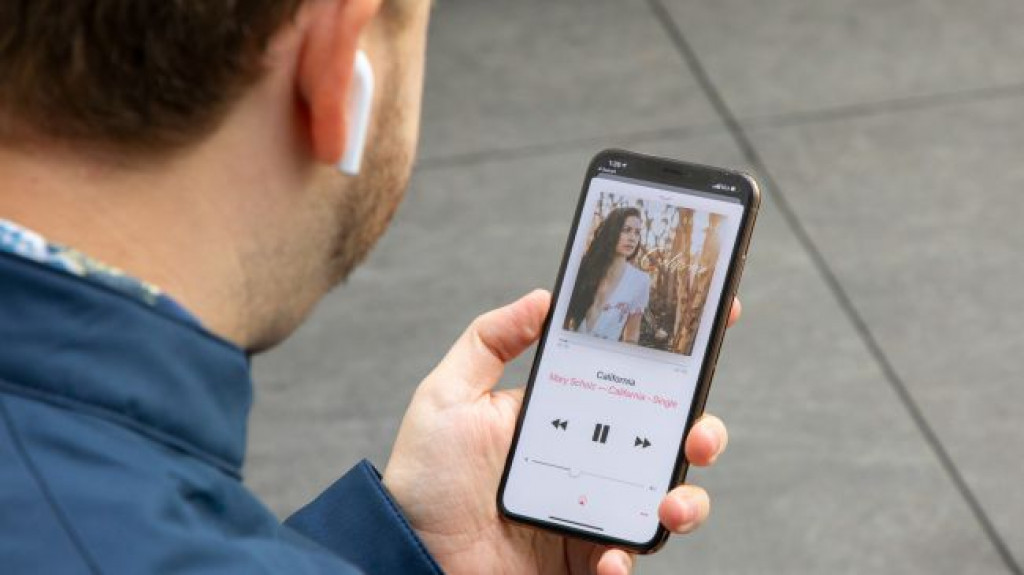
In terms of audio quality, nothing has changed between the original AirPods and the second-generation model. They have a lively, powerful presentation, although they can sound slightly harsh when it comes to higher-frequency sounds, and they aren’t the bassiest earbuds on the market.
We tried them out on Joanna Newsom’s Sawdust and Diamonds, and while we were impressed by the clarity of the vocal, we were slightly underwhelmed by the treatment of the bass, and found that the treble frequencies were sometimes uncomfortably harsh.
We had the same issues listening to Al Green’s Let’s Stay Together; while the mid-frequency vocals sounded smooth and detailed, the higher brass and woodwind accents overpowered the other frequencies.
The AirPods (2019) fared slightly better when it came to Radiohead’s No Surprises. The gently strummed acoustic guitar had a warm, textural sound, while the glockenspiel sweetly accented the percussion with its crystalline presentation. Again, the vocals sounded good overall, with a smooth, clear tone; however, the new AirPods didn’t quite manage to convey the rich bass timbres.
So, like the original AirPods, the AirPods (2019) sound great when it comes to mid-frequency vocals, guitar and keys, but they can sound rather lackluster when it comes to bassier frequencies, and you may experience slight harshness with percussive, high-frequency sound.
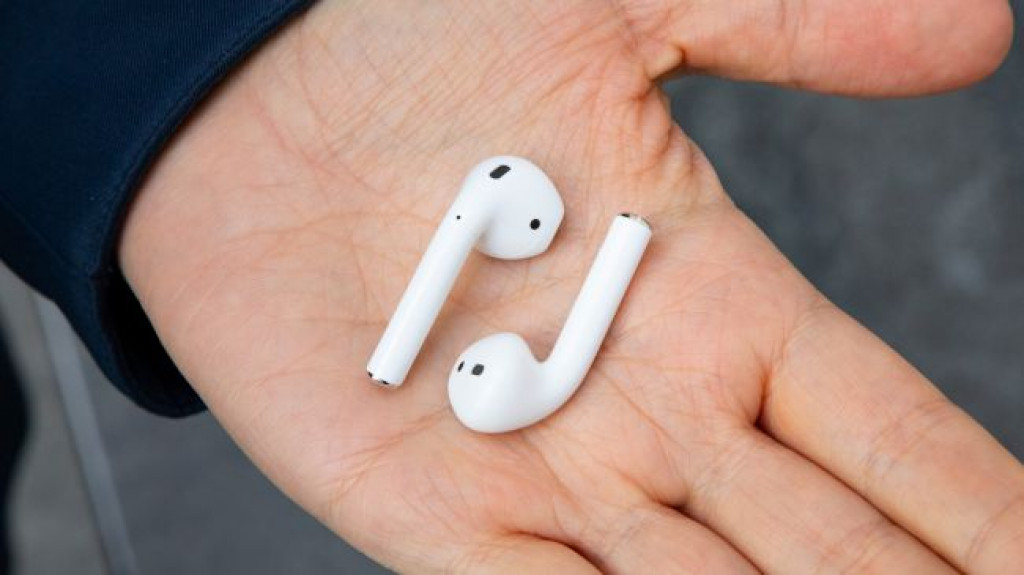
Final verdict
Aside from the wireless charging case (which costs extra), the new AirPods don’t seem to be a huge improvement on their predecessors.
Yes, pairing is noticeably quicker, the hands-free ‘Hey Siri’ feature is useful, and having the option to charge wirelessly will certainly be an attractive proposition to many users – but it doesn’t feel like Apple has addressed any of the issues the original AirPods had, notably sound quality and design.
Instead, Apple has tried to improve features that were already pretty impressive to begin with.
While the wireless charging case works well, buying it alongside the AirPods (2019) makes them more expensive than many of their competitors; the Samsung Galaxy Buds, for example, come with a wireless charging case at no extra cost.
If your old AirPods have seen better days and you were thinking of buying a new pair anyway, it’s definitely worth buying the AirPods (2019) rather than re-purchasing the originals, as they’re the same price as their predecessors – unless you want the wireless charging case, that is.
Equally, if you’re looking to buy your first pair of true wireless earbuds altogether, the AirPods (2019) are definitely worth looking at, particularly if you already use an iPhone to play music.
However, if you have the original AirPods and they’re still in good working order, the improvements Apple has made to the original AirPods may not be significant enough to warrant spending money on upgrading to the AirPods (2019).
Source: techradar.com









































